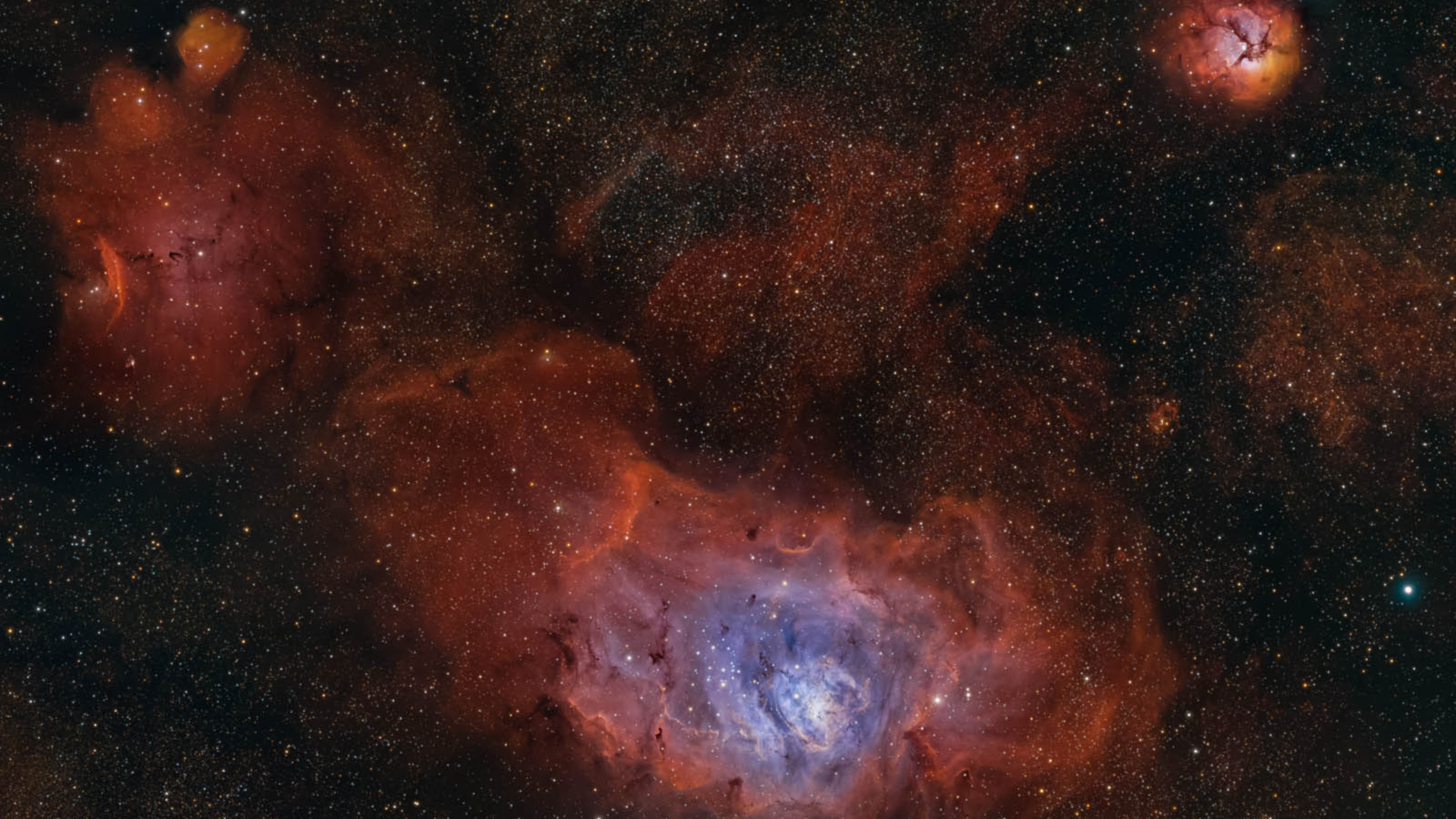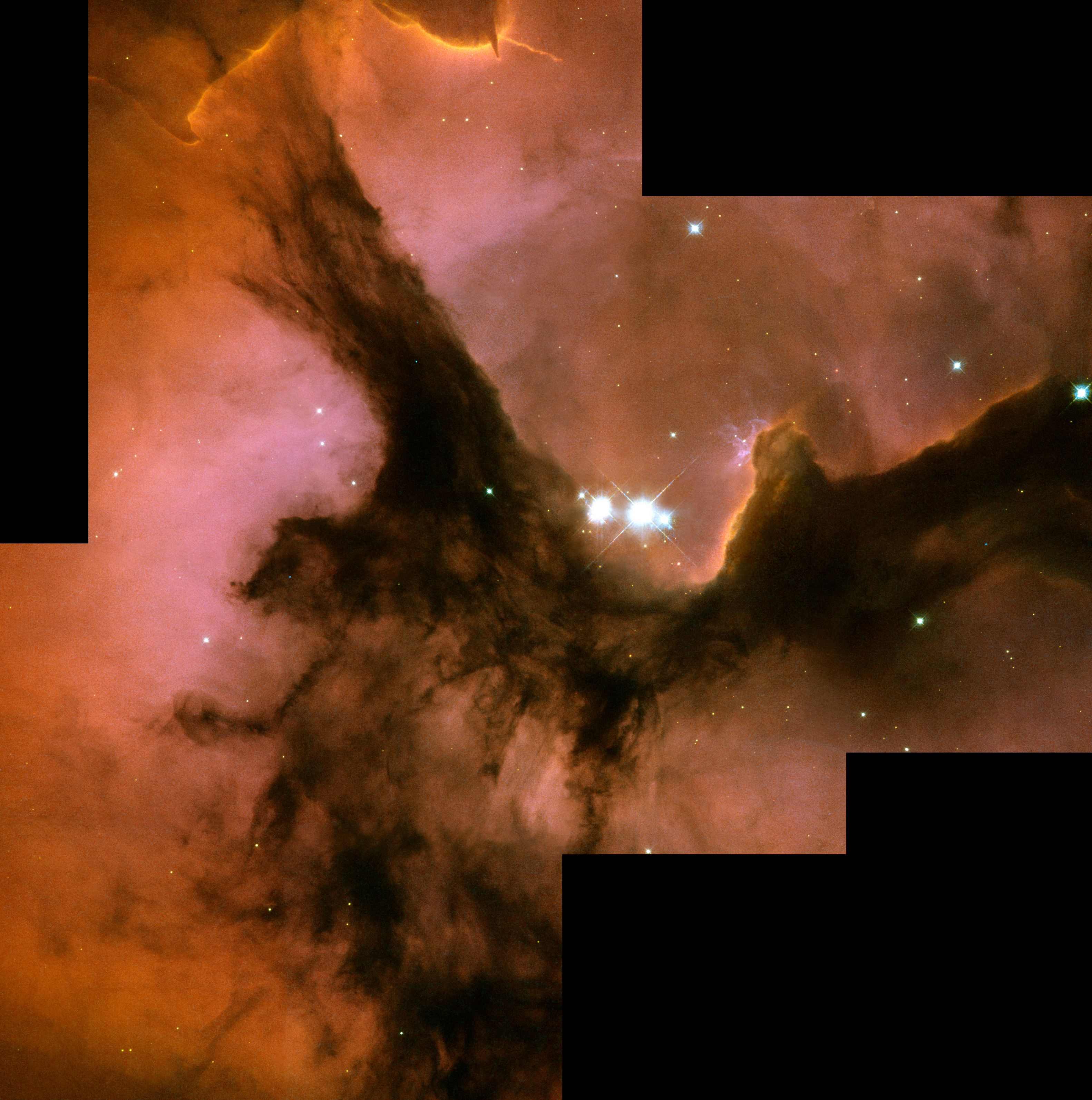Astrophotographer captures the heart of the Lagoon Nebula glowing below a cosmic Trifid (photo)
The nebulas were observed under the near-pristine dark skies of northern Arizona.

Astrophotographer Greg Meyer has captured a colorful view of the famous Trifid and Lagoon nebulas illuminated from within by radiation cast out by generations of energetic young stars.
Both star-forming regions orbit within the Milky Way over 4,000 light-years from Earth in the constellation Sagittarius. Their relative brightness and intriguing structures make them a popular target for astrophotographers and scientists alike, who have used powerful observatories such as the Hubble Space Telescope to capture spectacular imagery of the stellar nurseries.
The 100 light-year-long form of the Lagoon Nebula (Messier 8) can be found dominating the lower section of Meyer's image, with the dense starfield near the Milky Way's core serving as a backdrop for the deep-space vista. Clusters of bright, energetic stars can be seen sculpting knots of interstellar clouds towards the bottom of the image, as denser filaments of star-forming material cut dark profiles against the irradiated material beyond.
Viewers can spot the iconic form of the Trifid Nebula (Messier 20) lurking in the upper right of Meyer's portrait. Colossal lanes of cosmic dust can be seen silhouetted against the glowing cloud of interstellar gas forming the bulk of the iconic nebula. A bright point of light can be seen nestled in the crook where two of the dust lanes intersect, revealing the presence of a population of newly formed, massive stars, which were imaged by the Hubble Space Telescope in 2004.

Meyer captured the ancient light cast out by the Lagoon and Trifid Nebula over 34 hours in May 2025, while observing under the near-pristine dark skies of Arizona, a little north of Ash Fork. Meyer used a Sky-Watcher Esprit 80mm telescope in conjunction with a Player One Poseidon M pro astronomy camera to collect the data — along with filters, a guide scope, and other peripherals — before editing it using Pixinsight and Adobe software.
Editor's Note: If you would like to share your astrophotography with Space.com's readers, then please send your photo(s), name, location and comments on your experiences capturing the shots to spacephotos@space.com.
Breaking space news, the latest updates on rocket launches, skywatching events and more!

Anthony Wood joined Space.com in April 2025 after contributing articles to outlets including IGN, New Atlas and Gizmodo. He has a passion for the night sky, science, Hideo Kojima, and human space exploration, and can’t wait for the day when astronauts once again set foot on the moon.
You must confirm your public display name before commenting
Please logout and then login again, you will then be prompted to enter your display name.
